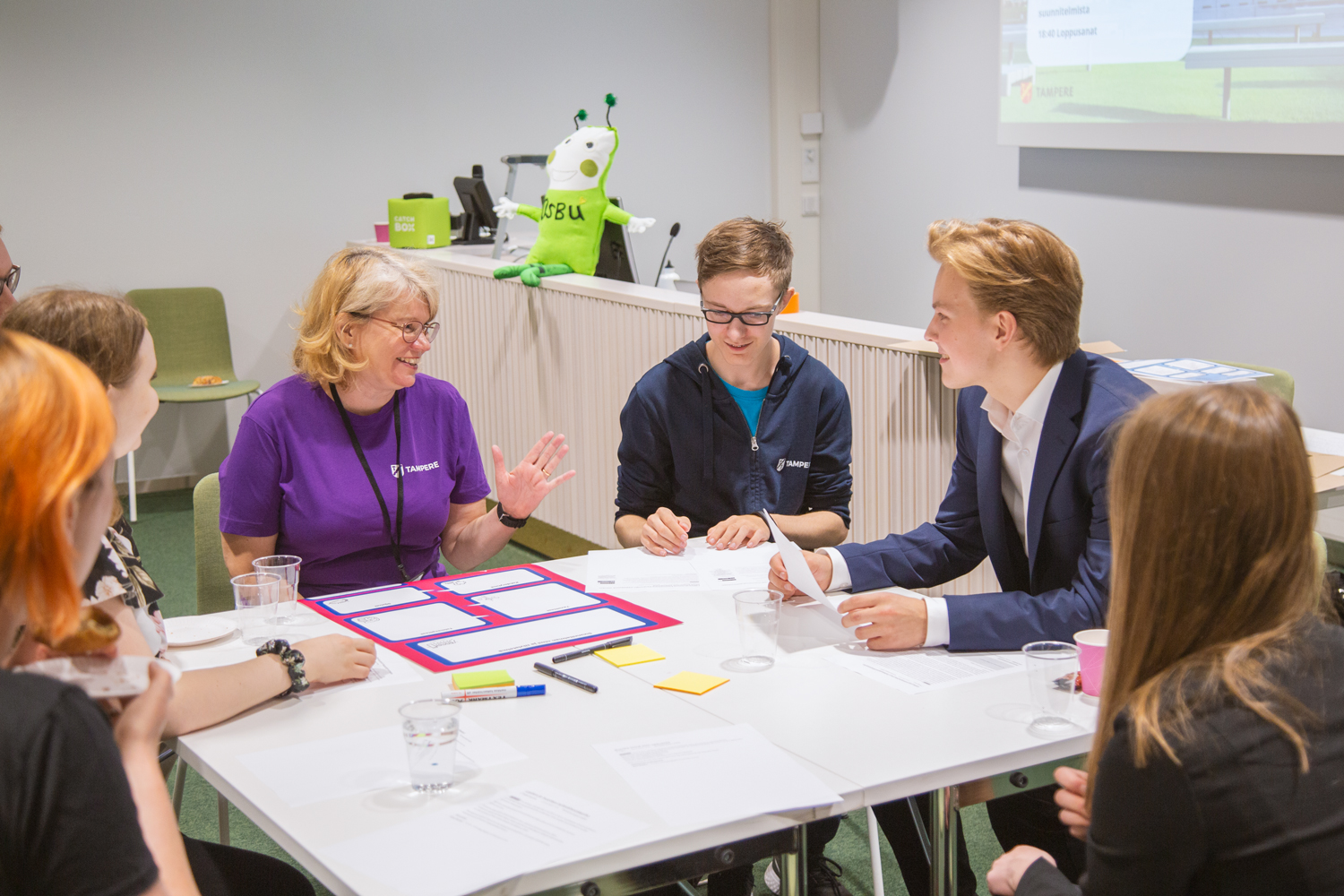Participatory budgeting in Tampere
The theme of the PB process in Tampere was the wellbeing of children and the youth. The citizens were invited to propose project ideas and to vote on projects under this overall theme.
The PB process of Tampere took place in five phases. In spring 2020, the citizens were invited to submit preliminary project ideas. The city received 380 project ideas. Before the summer holidays, city representatives screened all the preliminary ideas. After the screening, 227 project ideas were accepted to the PB process.
— The ideas we received from citizens varied in their themes and style. Some ideas were formal and thorough – almost like petitions. Others had a relaxed style and required a bit more interpretation. All in all, the ideas were an interesting bunch that we were delighted about, project planner Jari Mäkäläinen describes the first phase of the PB process.
In the autumn, PB process continued with project design workshops. The citizens were invited to participate in seven workshops, in which the submitted project ideas were developed further. The goal of the workshop phase was to improve the quality and comprehensiveness of the project plans, and to identify possible overlaps by merging very similar project ideas. As the result of the workshop phase, 120 developed project plans moved forward in the process.
After the workshops, city representatives assessed the developed project plans. The goal of this assessment was to estimate the cost of each project idea.
In November, the PB process moved to the voting phase. In this phase, all citizens over the age of 11 could vote which projects should be implemented. Each eligible citizen had two votes. In total, the eligible voters casted 2927 votes, the most popular project receiving 296 votes. After the voting phase, 12 quite different projects were granted funding and they will be implemented in 2021.
— This year’s PB was the first time the City of Tampere implemented participatory budgeting. We learned a lot during this whole process. Not only did we get information on how to implement a new method of participation in Tampere but we also learned a lot about the people living here: what they think works in the city and what they would like to change. It’s been a true learning experience for all of us, Mäkäläinen illustrates the city’s experiences.
Participatory budgeting as a co-creation method in urban development
Master’s thesis worker Lassi Lapinmäki studied the PB process of Tampere in his master’s thesis. Lassi studied Industrial Engineering and Management at Tampere University.
Lassi’s thesis is entitled “Public participation in urban development projects: participatory budgeting as a co-creation method“. In his thesis, Lassi approaches PB from the crossroads of public participation and project management. Through this kind of a perspective, the thesis conceptualizes PB as a process for empowering citizens’ decision-making in the front end of urban development projects. The term “front-end phase” refers to project design and project planning.
The empirical part of Lassi’s thesis focuses on the workshop phase of the PB process. The findings of the thesis highlight the different roles of the citizens and the city representatives in the project design workshops. In addition, the thesis illustrates conditions and other factors that promote co-creation between the citizens and between the citizens and the city representatives in the workshops.
— The findings of my thesis illustrate a variety of different roles citizens and city representatives take in the project design workshops. Co-creation, that is the design and planning of the projects together by the citizens and the city representatives, can be understood as a combination of those roles and different forms of communication, Lassi explains.
— In addition, I provide a few practical suggestions for organizing PB in a way that promotes co-creation. These suggestions can be grouped into two categories: the quality of the initial project proposals, and the conditions of the project design workshops, Lassi continues.
— Our way of implementing and organizing PB and workshops related to it is by no means a finished, perfect product. Lassi’s thesis and his findings are an important piece of knowledge when we evaluate our whole PB process and its different phases. For us it’s been valuable to have someone look at our work from another perspective, Mäkäläinen thanks the research collaboration between the CaPs project and the PB project of Tampere.
The master’s thesis of Lassi Lapinmäki was supervised by Associate Processor (tenure track) Tuomas Ahola and Postdoctoral Research Fellow Lauri Vuorinen from the Unit of Industrial Engineering and Management. The thesis is available here: http://urn.fi/URN:NBN:fi:tuni-202011308317.
Image: City of Tampere.

